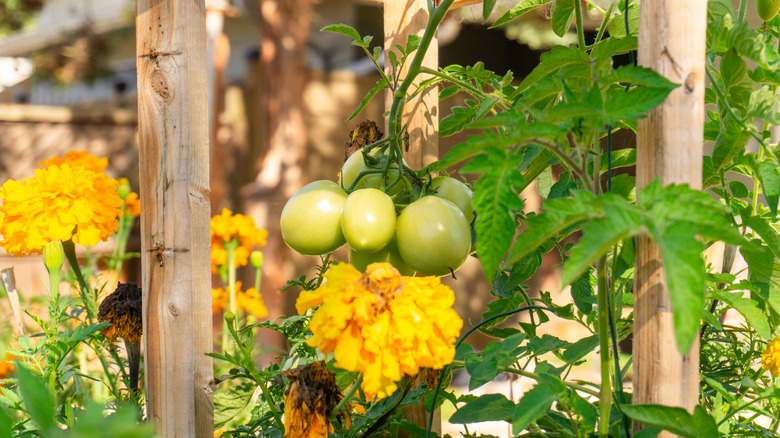Gardening can be a peaceful and enjoyable pastime with tangible benefits, but sometimes, an unwelcome guest can ruin all the fun. Pests can be a real headache for any gardener, causing damage to plants and leaving a trail of destruction behind. But the fiery Mexican marigold (Tagetes erecta) could be the secret weapon gardening hack you need.
Mexican marigolds, sometimes called Aztec marigolds, are not only beautiful, but also have incredible pest-repelling abilities. They are like little protectors that stand guard alongside veggies or other flowers in your garden, keeping predators at bay. These vibrant, golden-hued flowers emit a unique odor that repels many problematic critters, including rabbits, insects, and harmful nematodes, all while attracting pollinators. Not only are Mexican marigolds effective, but they are also a natural and safe alternative to chemical pesticides. You can protect your plants from pests by planting them in your garden without harming beneficial insects like bees and butterflies. Plus, they’re easy to grow, even if you’re a beginner gardener.
Repelling pests with Mexican marigolds
Why Gardeners Love marigolds:1. Marigolds Are Easy To Grow 🌼2. Marigolds Attract Bees & Other Pollinators 🐝3. Marigolds Attract Predatory Insects Like Ladybugs & Praying Mantis 🐞 4. They Repel Certain Pests Like Aphids & Beetles 🪲 5. They Attract Butterflies To Your Garden 🦋——#companionplants #companionplanting #containergarden #gardening101 #gardeningtips #marigold #seeds #seedsaving
♬ original sound – eraeholland
An effective way of using Mexican marigolds is called companion planting. Companion planting is a gardening technique that involves planting certain crops or plants together to improve growth and protect against pests. Mexican marigolds contain natural chemical compounds that repel specific insects and have a scent that deer and rabbits find distasteful. Because of this, they work as a sort of protective barrier to vulnerable plants such as melons, tomatoes, roses, and basil.
It’s important to carefully consider their placement to maximize their potential. One approach is to plant them around the perimeter of your garden beds or between rows of vulnerable plants. This spatial arrangement creates a boundary that pests are less likely to cross, keeping your plants safe. Apart from their pest-repelling properties, Mexican marigolds are also known to attract beneficial insects that feed on pests, helping to keep them under control in this way as well.
Enhanced pest control

With a bit of care, Mexican marigolds can grow to be strong and healthy, which enhances their pest-deterrent properties. To ensure their well-being, provide them with adequate water, plant them in nutrient-rich soil, and regularly prune any dead flowers. Another great benefit of Mexican marigolds is their versatility in crop rotation plans. By planting them in different areas of your garden each year, you can prevent pests from taking hold in the soil, keeping your garden healthy and thriving.
In order to create a comprehensive and effective pest management plan for your garden, it can be helpful to incorporate Mexican marigolds as a valuable component. Incorporating a variety of techniques into an integrated pest management plan — such as organic pesticides, biological controls, and proper gardening practices, like plant spacing and soil enrichment — can help to create a robust defense against garden pests. By working together, these methods can foster a harmonious and sustainable gardening environment.